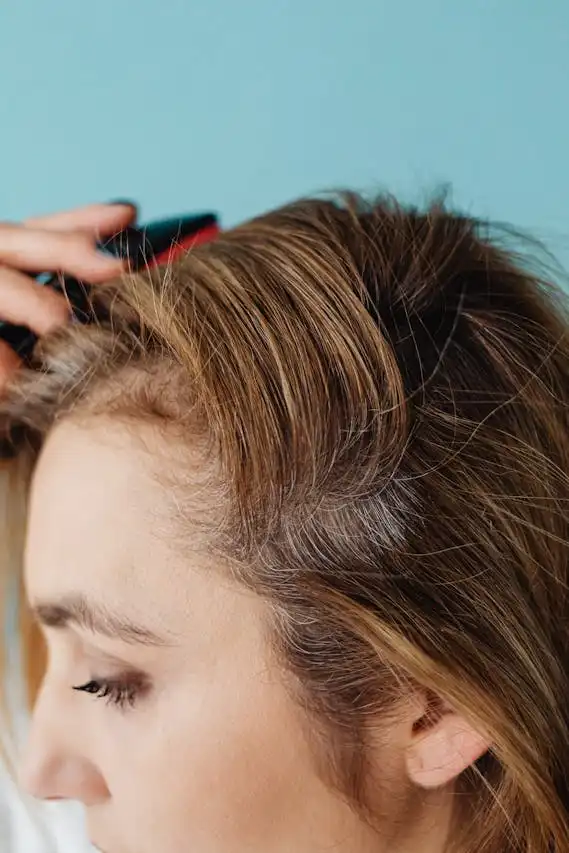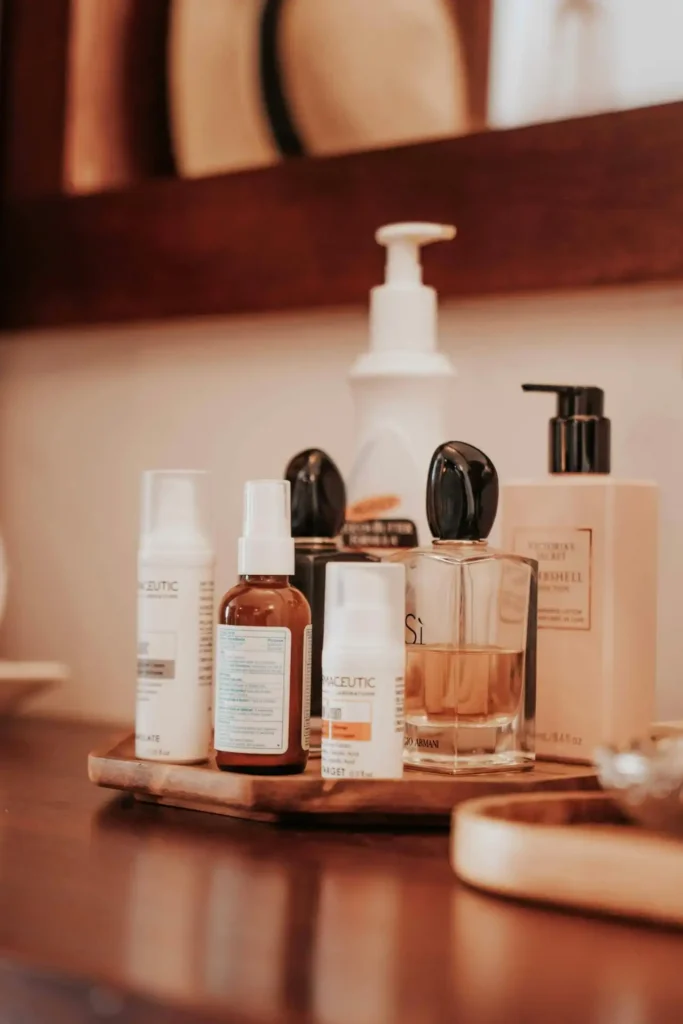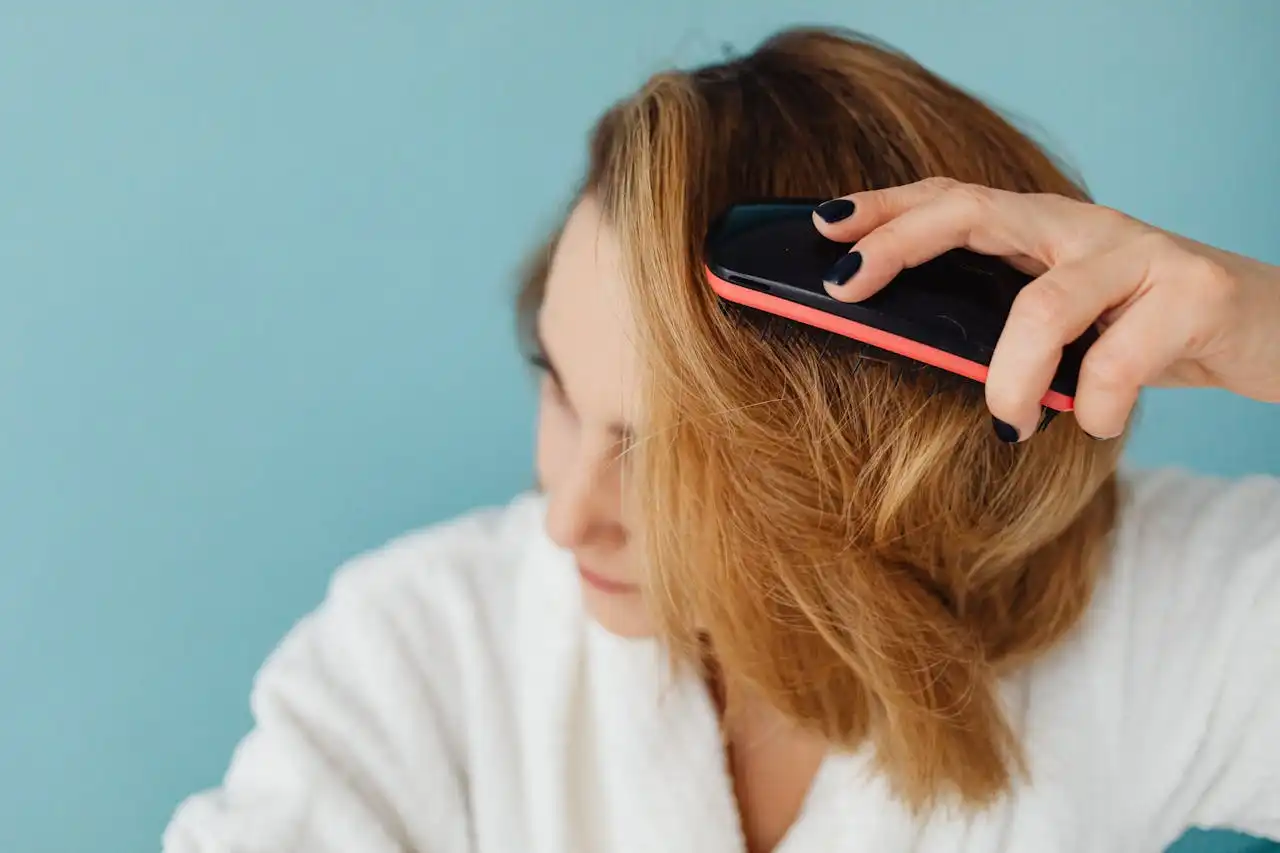Scalp Care 101: Why It’s the Secret to Healthy Hair
You spend hours perfecting your hair routine, but when did you last think about your scalp?
Your scalp deserves the same attention you give your face. It’s the foundation where healthy hair grows.
Most people overlook this crucial step. Yet your scalp holds the key to achieving the hair of your dreams.
Understanding Your Scalp: The Foundation of Great Hair

Your scalp isn’t just skin with hair follicles. It’s a complex ecosystem that directly impacts your hair’s health, growth, and appearance.
When you understand how your scalp works, you can make better decisions about your hair care routine.
Think of your scalp as fertile soil in a garden. Your scalp contains thousands of hair follicles, each producing a single strand of hair.
Just as plants need nutrient-rich, well-maintained soil to thrive, your hair needs a healthy scalp environment to grow strong and beautiful.
These follicles depend on proper blood circulation, balanced oil production, and a clean environment to function optimally.
Your scalp has its own microbiome – a delicate balance of beneficial bacteria and natural oils that protect and nourish your hair follicles.
When this balance gets disrupted by harsh products, environmental factors, or poor care habits, you’ll notice the effects immediately.
Your hair might become dull, brittle, or start falling out more than usual. The sebaceous glands in your scalp produce natural oils called sebum.
This oil travels down your hair shaft, providing natural moisture and protection.
However, when sebum production becomes imbalanced – either too much or too little – it creates problems that affect your entire head of hair.
Common Scalp Issues That Sabotage Your Hair Goals
You might experience scalp problems without realizing they’re connected to your hair concerns.
Recognizing these issues early helps you address them before they impact your hair’s health and appearance.
Dandruff affects nearly half of all adults at some point in their lives. You’ll notice white or yellow flakes on your shoulders and an itchy, irritated scalp.
Contrary to popular belief, dandruff isn’t always caused by dry skin. Often, it results from an overgrowth of yeast called Malassezia, which feeds on the oils in your scalp.
Scalp acne appears as small bumps or pimples along your hairline and throughout your scalp.
This condition occurs when hair follicles become clogged with oil, dead skin cells, and bacteria.
You’re more likely to develop scalp acne if you use heavy styling products, don’t wash your hair regularly, or wear hats frequently.
An oily scalp makes your hair look greasy within hours of washing. Your sebaceous glands produce excess oil, causing your roots to appear flat and lifeless.
This overproduction can be triggered by hormonal changes, genetics, or using the wrong products for your scalp type.
Conversely, a dry scalp feels tight, itchy, and flaky. You might notice small, white flakes that differ from dandruff flakes.
Dry scalp often results from over-washing, using harsh shampoos, cold weather, or underlying skin conditions like eczema.
Scalp sensitivity manifests as redness, burning, stinging, or itching after using certain products.
Your scalp might react to specific ingredients like sulfates, fragrances, or preservatives. This sensitivity can make it challenging to find suitable hair care products.
Building Your Essential Scalp Care Routine
Creating an effective scalp care routine doesn’t require expensive products or complicated steps.
You need consistency and the right approach for your specific scalp type and concerns. When you shampoo, focus on your scalp rather than the length of your hair.
Start with proper cleansing techniques. You don’t need to wash your hair daily unless you have an extremely oily scalp or engage in activities that make you sweat heavily.
For most people, washing every 2-3 days maintains the right balance of cleanliness without stripping natural oils.
Use your fingertips – never your nails – to gently massage the shampoo into your scalp using circular motions.
This massage stimulates blood circulation and helps remove buildup without causing irritation or damage.
Pay attention to water temperature. Hot water might feel relaxing, but it strips your scalp of natural oils and can cause irritation.
Use lukewarm water for washing and finish with a cool rinse to seal the hair cuticles and add shine.
Don’t skip the conditioner, but apply it correctly. Focus conditioner on the mid-lengths and ends of your hair, avoiding the scalp area.
Conditioner on your scalp can weigh down your roots and potentially clog hair follicles. Consider adding a weekly scalp treatment to your routine.
This could be a gentle exfoliating scrub to remove dead skin cells and product buildup, or a nourishing mask to address specific concerns like dryness or sensitivity.
Ingredients That Transform Your Scalp Health

Understanding beneficial ingredients helps you choose products that actually work for your scalp concerns.
Some ingredients have proven track records for addressing specific scalp issues and promoting healthy hair growth.
Salicylic acid gently exfoliates your scalp, removing dead skin cells and unclogging hair follicles.
This beta-hydroxy acid is particularly effective for treating dandruff and scalp acne. You’ll find it in specialized scalp treatments and some therapeutic shampoos.
Tea tree oil possesses natural antifungal and antibacterial properties that help combat dandruff-causing yeast and bacteria.
However, you should never apply pure tea tree oil directly to your scalp. Look for products containing diluted tea tree oil, or add a few drops to your regular shampoo.
Zinc pyrithione is a powerhouse ingredient for treating dandruff and seborrheic dermatitis.
This antifungal agent reduces the growth of Malassezia yeast while soothing scalp irritation. Many over-the-counter dandruff shampoos contain this effective ingredient.
Niacinamide (vitamin B3) regulates oil production and reduces inflammation in your scalp.
This gentle ingredient works well for people with sensitive scalps or those experiencing both oily roots and dry lengths.
Hyaluronic acid isn’t just for your face – it can hydrate your scalp too. Caffeine stimulates blood circulation in your scalp, potentially promoting hair growth.
This humectant draws moisture from the environment and holds it in your scalp tissue, making it ideal for addressing dryness and flakiness.
While research is ongoing, many people report positive results from using caffeine-infused scalp treatments and shampoos.
Lifestyle Factors That Impact Your Scalp
Your daily habits and lifestyle choices significantly affect your scalp health. Making small adjustments can lead to dramatic improvements in both your scalp condition and hair quality.
Your diet directly impacts your scalp health from the inside out. Stress wreaks havoc on your scalp and hair.
Protein provides the building blocks for strong hair, while vitamins like biotin, vitamin D, and iron support healthy hair growth.
Omega-3 fatty acids from fish, nuts, and seeds help maintain scalp moisture and reduce inflammation.
When you’re stressed, your body produces cortisol, which can disrupt your hair growth cycle and trigger scalp issues like dandruff or excessive oil production.
Incorporating stress-management techniques like meditation, exercise, or hobbies can improve your scalp health.
Your pillowcase material matters more than you might think. Cotton pillowcases can cause friction and absorb moisture from your hair and scalp.
Switching to silk or satin pillowcases reduces friction and helps maintain your scalp’s natural moisture balance.
Heat styling tools can damage not only your hair but also your scalp. Excessive heat from blow dryers, flat irons, and curling tools can dry out your scalp and irritate sensitive skin.
When you use heat styling tools, keep them moving and use a heat protectant product.
Environmental factors like pollution, UV rays, and weather changes affect your scalp health.
Protect your scalp by wearing hats in direct sunlight, using products with UV protection, and washing your hair more frequently if you live in a highly polluted area.
Professional Treatments Worth Considering
Sometimes professional intervention can address stubborn scalp issues more effectively than at-home treatments. Understanding your options helps you decide when to seek professional help.
Scalp facials have gained popularity as people recognize the importance of scalp health. A professional can assess your scalp condition and customize the treatment accordingly.
These treatments typically include deep cleansing, exfoliation, and nourishing masks specifically designed for scalp concerns.
Micro needling for the scalp involves using tiny needles to create micro-injuries that stimulate blood flow and potentially promote hair growth.
This treatment is becoming more popular for people experiencing hair thinning or slow hair growth.
Professional scalp peels use stronger concentrations of exfoliating acids to address severe buildup, stubborn dandruff, or other scalp conditions.
These treatments should only be performed by trained professionals to avoid irritation or damage.
Low-level laser therapy (LLLT) uses red light to stimulate hair follicles and improve scalp circulation.
While more research is needed, some studies suggest this treatment may help with hair thinning and promote healthier hair growth.
If you’re dealing with persistent scalp issues that don’t respond to over-the-counter treatments, consider consulting a dermatologist.
They can diagnose underlying conditions like seborrheic dermatitis, psoriasis, or alopecia and prescribe appropriate treatments.
Creating Your Personalized Scalp Care Plan

Your scalp is unique, and your care routine should reflect your specific needs and concerns. Creating a personalized plan ensures you’re addressing your particular issues effectively.
Start by identifying your scalp type. Is it oily, dry, sensitive, or combination? Pay attention to how your scalp feels and looks throughout the week.
Notice patterns – does it get greasier on certain days? Does it feel itchy after using specific products?
Choose products based on your scalp type and concerns, not just your hair type. You might have fine, dry hair but an oily scalp, requiring different products for each area.
Don’t be afraid to use different shampoos or treatments based on your scalp’s changing needs.
Track your progress by taking notes or photos. Document how your scalp looks and feels before starting new products or routines.
This helps you identify what works and what doesn’t, making it easier to adjust your routine as needed.
Be patient with new products and routines. Don’t switch products too quickly or you won’t know what’s actually working.
Your scalp needs time to adjust to changes, and most products require consistent use for 4-6 weeks before you see significant results.
Adjust your routine seasonally. Your scalp’s needs change with weather, humidity levels, and environmental factors.
You might need more moisture in winter and lighter products in summer. Pay attention to these changes and modify your routine accordingly.
Conclusion
Your scalp is the foundation of healthy, beautiful hair. Give it the attention it deserves, and watch your hair transform completely.







